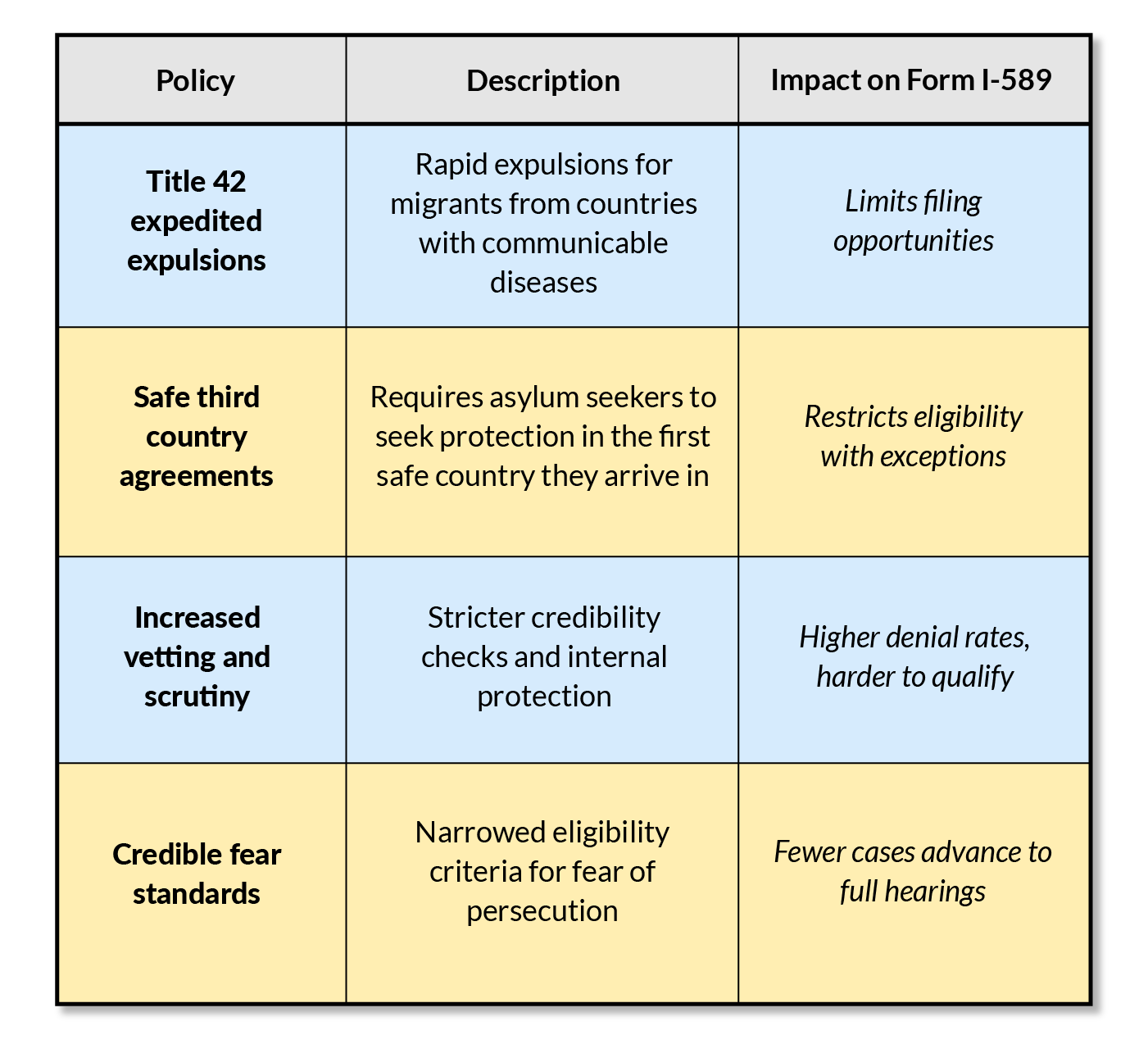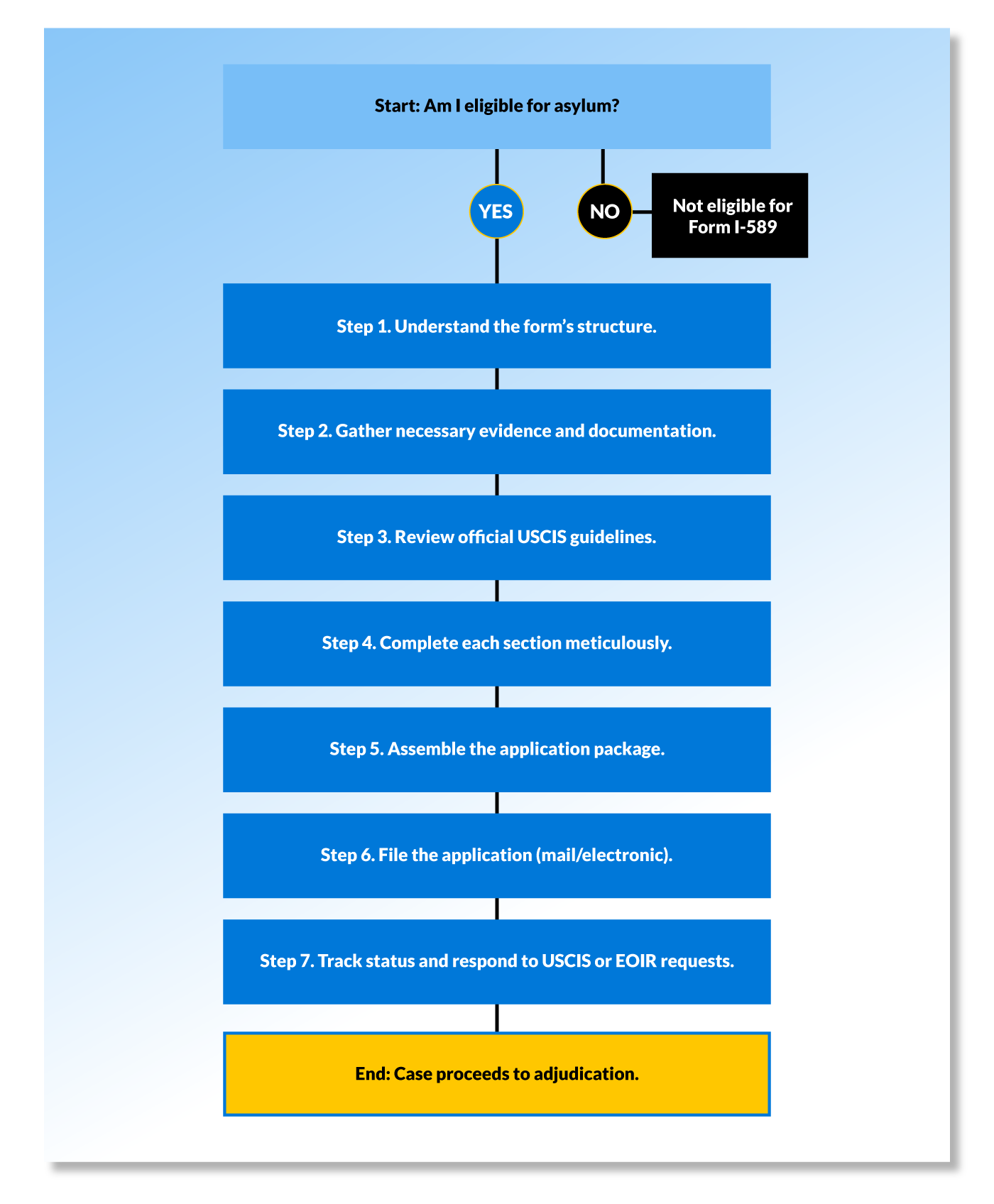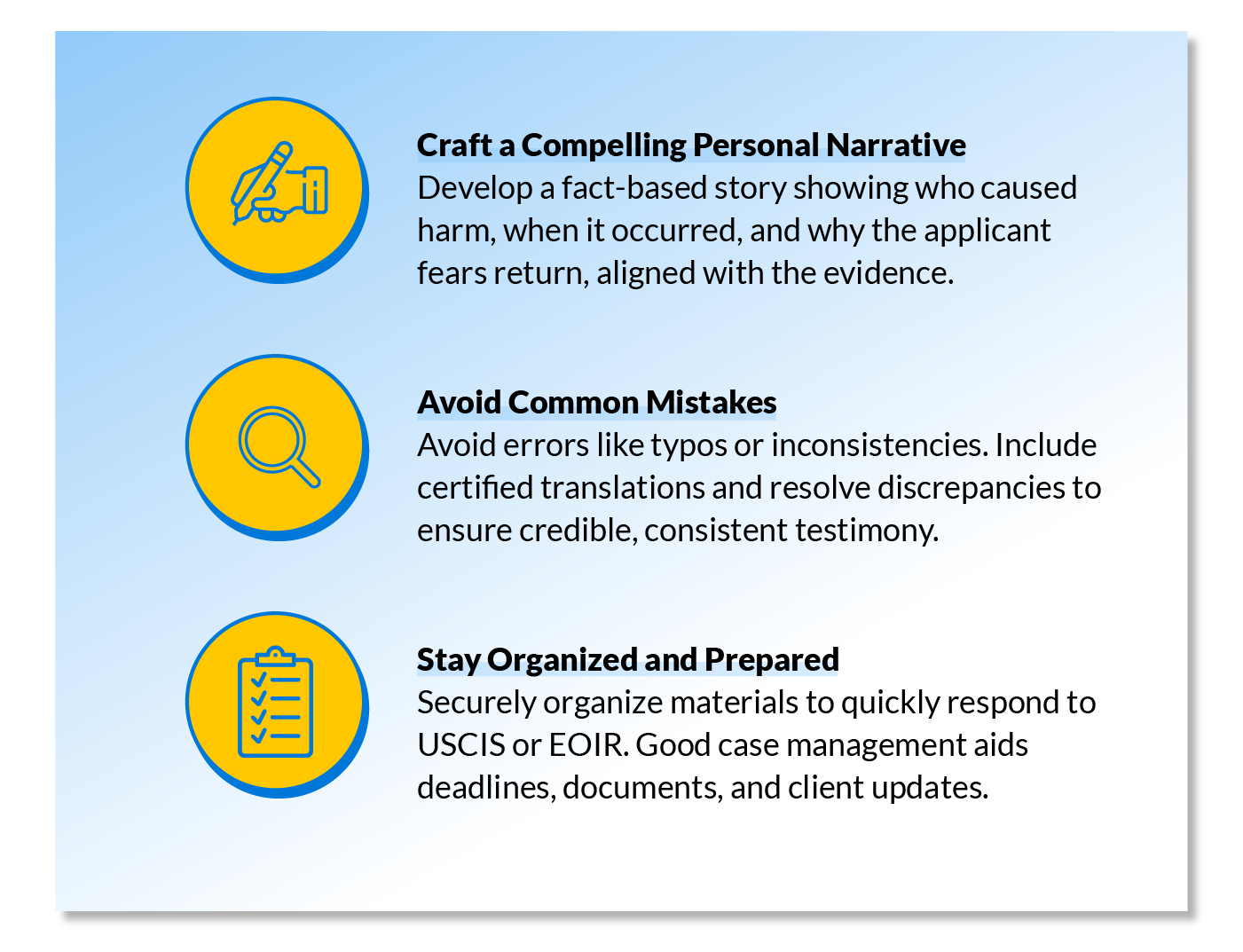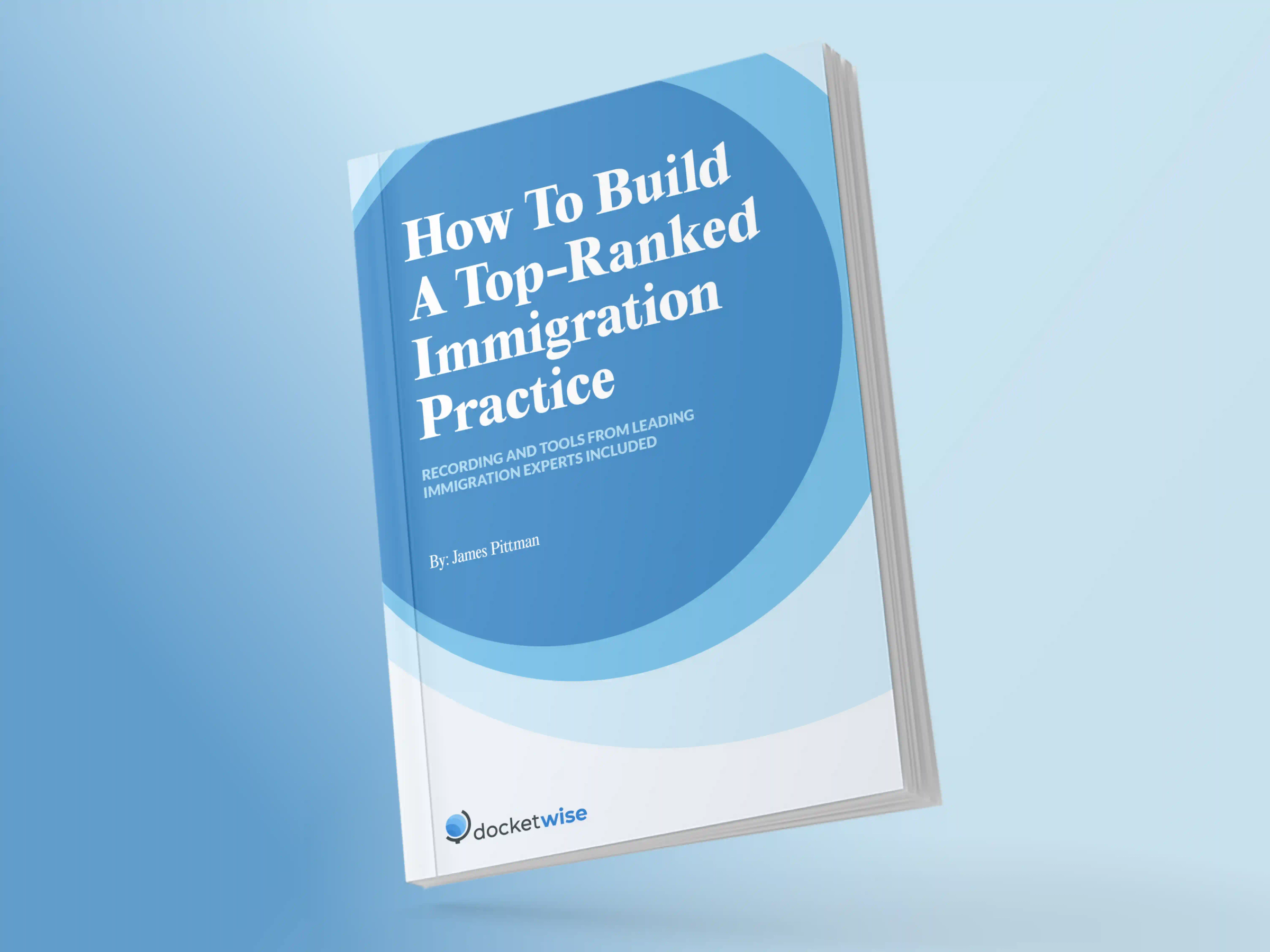For many, Form I-589 **(**Application for Asylum and for Withholding of Removal) is the first step toward a life free from persecution and fear. This application allows individuals to request asylum or withholding of removal in the United States—potentially securing their future in a place of safety and opportunity.
For immigration lawyers, Form I-589 represents a stage in helping clients seeking refuge. It requires a deep understanding of legal nuances and a commitment to crafting compelling cases.
But navigating this complex process can feel overwhelming. Common questions can include:
How long does it take to process Form I-589?
What kind of evidence strengthens an application?
How do you avoid common pitfalls?
In this article, we’ll break down everything you need to know about Form I-589, from eligibility requirements to strategies for building a strong case.
What is Form I-589?
Form I-589 is used by individuals seeking protection in the United States. Those who have experienced, or fear, persecution based on race, religion, nationality, membership in a particular social group, or political opinion may file this form to request asylum. This process helps these individuals avoid being returned to a place where they might be harmed.
Applicants must meet specific requirements to file Form I-589, which include:
Being physically present in the United States or at a U.S. port of entry
Having a credible fear of persecution if returned to the home country
Filing within one year of arrival, unless extraordinary circumstances apply
Understanding Asylum Application Trends and Statistics
The U.S. asylum process is multifaceted, and recent shifts in policies and approval rates highlight the importance of staying informed. For immigration law firms, understanding these trends—and communicating them effectively to clients—can help build trust and deliver desired outcomes.
Fluctuating Approval Rates
Approval rates for asylum petitions change frequently due to shifts in administration and policy. In October 2024, approval rates fell to 36%, down from more than 50% during the Biden administration in fiscal year 2023. These statistics also vary considerably based on the applicant’s country of origin.
For example, less than 20% of applicants from Mexico, Colombia, Ecuador, and Brazil were approved in the fiscal year 2024, while applicants from Venezuela and Cuba experienced approval rates of 64.5% and 51.6% respectively. Understanding these patterns allows immigration law firms to better advise clients on what to expect—ensuring they can prepare strong cases that align with current trends.
Processing Delays
Asylum cases face substantial backlogs in U.S. immigration courts. The immigration court backlog is currently (as of the publish date of this article) at over 3 million cases which is an indication that many applicants may wait years for their hearing. These ongoing delays emphasize the need for efficient case management tools. Immigration law firms that adopt streamlined solutions help clients navigate longer wait times with greater clarity, ensuring that essential forms—such as Form I-589—are completed accurately and submitted as early as possible.
Possible Changes in 2025 From the Trump Administration
With Donald Trump beginning his second term as president on January 20, 2025, potential shifts in asylum policies could further impact Form I-589 applicants. Based on prior actions and recent statements, the following changes are anticipated:
Reinstatement of restrictive policies: There may be a return to stricter asylum policies, including expanded use of safe third-country agreements, which could force asylum seekers to apply for protection in another country before reaching the U.S.
Increased credible fear standards: The administration may further narrow the criteria for credible fear, making it more challenging for applicants to qualify for asylum hearings.
Heightened vetting and evidence requirements: Increased scrutiny of applications, with a focus on requiring more robust evidence to substantiate claims of persecution or harm.
The Impact of Recent Policy Shifts on I-589 Applications
Recent policy changes and political developments have significantly influenced the asylum landscape in the United States—directly affecting asylum seekers and their eligibility to file form I-589.
Several key policy shifts have altered how asylum applications are processed and adjudicated:
Title 42 expedited expulsions: Initially implemented during the COVID-19 pandemic, Title 42 allows for the rapid expulsion of migrants without the opportunity to seek asylum. This includes asylum seekers who had recently been in a country where a communicable disease was present. Although some restrictions have been lifted, elements of Title 42 remain in effect—limiting the ability of asylum seekers to file Form I-589.
Safe third country agreements: Agreements with countries like Canada and Mexico require asylum seekers to seek protection in the first safe country they arrive in. This policy restricts the ability to file Form I-589 in the U.S. unless specific exceptions apply, such as family unity or humanitarian reasons.
Increased vetting and scrutiny: Recent administrations have intensified the vetting process for asylum applications, leading to higher denial rates. Enhanced scrutiny can affect the credibility of claims and the availability of internal protection within the applicant's home country.
Changes in credible fear standards: Adjustments to what constitutes a credible fear of persecution have narrowed eligibility, making it more challenging for applicants to advance their cases to full asylum hearings.

These changes have led to reduced eligibility, longer processing times, and limited access to asylum benefits. To navigate this complex and evolving environment, immigration lawyers must stay organized and informed. Case management software, such as Docketwise, is essential for maintaining consistency and efficiency amid shifting policies. It helps lawyers manage case documentation, track deadlines, and stay updated on the latest legal requirements—ensuring they provide the best possible representation for their clients.
Completing and Submitting Form I-589: A Step-by-Step Guide
With careful preparation and organization, immigration law firms can help clients strengthen their cases, increase efficiency, and improve overall outcomes.
Understand the form’s structure Form I-589 requests personal details, family background, and information on past persecution or feared harm. Every section must be completed accurately and consistently, ensuring that all statements align with the supporting evidence.
Assemble comprehensive evidence and documentation Collect all required documentation before starting the form. This includes:some text
Identity documents (passports, birth certificates)
Country condition reports from credible sources such as the United Department of State or reputable non-governmental organizations
Witness and expert affidavits that support the applicant’s claims
Medical or police reports confirming past harm
Expert evaluations, such as psychological assessments, to reinforce the applicant’s credibility
Personal statements detailing why internal relocation is not an option and explaining the applicant’s fear of return
**Review official instructions and guidelines **Thoroughly understand the official instructions provided by the U.S. Citizenship and Immigration Services (USCIS). Familiarity with these guidelines ensures a comprehensive and accurate submission.
**Complete each section meticulously **Fill out Form I-589 with attention to detail. Ensure that all responses are clear, accurate, and supported by the gathered evidence.
**Assemble the application package **Organize the application in the order specified by USCIS. Label and index documents for easy reference—making it straightforward for adjudicators to review the case.
**File the application **Submit Form I-589 according to USCIS guidelines, either by mail or electronically if applicable. Ensure that all parts of the application are included and properly signed.
**Track and respond promptly **Track the status of the I-589 application and respond quickly to any requests for additional information or documentation from USCIS or the Executive Office for Immigration Review (EOIR).

Tips for Lawyers Building a Winning Asylum I-589 Case
Gathering a wide range of credible evidence helps create a cohesive, well-supported narrative that adjudicators can easily follow.
Craft a Compelling Personal Narrative
Work with clients to develop a clear, fact-based story. Detail who caused harm, when it happened, and why the applicant fears returning. This narrative should align with the submitted evidence, highlighting specific incidents, responsible parties, and the nature of any ongoing threats.
Avoid Common Mistakes and Inconsistencies
Even minor errors—such as misspelled names, inconsistent dates, or incomplete fields—can undermine credibility. Carefully review all information before filing. If documents are in a non-English language, include certified translations. Resolve any discrepancies in advance so the applicant’s testimony remains trustworthy during interviews.
Stay Organized and Prepared
Maintain all application materials in a secure, easily accessible system. Responding promptly to requests from U.S. Citizenship and Immigration Services (USCIS) or the Executive Office for Immigration Review (EOIR) can make a significant difference in the case’s progress. For immigration lawyers who want to ensure everything runs smoothly, good case management can help them manage deadlines, track documents, and streamline client communication.

Docketwise Helps Streamline Immigration Forms Processes
Docketwise's Smart Forms functionality automates preparation for Form I-589 by auto-filling client data from tailored questionnaires, which reduces manual input. It also provides reminders to clients to help them meet critical asylum deadlines, and secure messaging to ensure. efficient communication. This ultimately saves time and energy for both lawyers and clients.
Docketwise is also a comprehensive case management software tailored for immigration lawyers. Here are a few ways that Docketwise can help simplify the immigration forms process, improve document management, and enhance client communication:
Transform the client intake process by automatically filling out immigration forms from a single questionnaire
Simplify client communication with secure messaging features
Manage supporting documents and evidence in a centralized platform
Stay compliant with automatic reminders for deadlines
Experience how these features can uniquely benefit your immigration firm and boost efficiency by, booking a demo today.
Unlock Your Success as an Immigration Lawyer.
Download Now
About the author

Justin FisherContent Writer
Justin Fisher is a content writer and SEO strategist for leading legal software companies, including MyCase, Docketwise, and CASEpeer. He specializes in writing about emerging legal technology, financial wellness for law firms, and more.
